Themed collection Advances in ion spectroscopy - from astrophysics to biology

List of participants
Poster titles
Concluding remarks for advances in ion spectroscopy Faraday Discussion
Because the Introductory Lecture of this Faraday Discussion emphasized the recent history and exciting developments in the fields of experimental methods and applications of gaseous ion spectroscopy, these Concluding Remarks are, by design, directed somewhat more toward the roles played by theory.
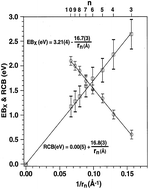
Faraday Discuss., 2019,217, 623-643
https://doi.org/10.1039/C9FD00058E
The FELion cryogenic ion trap beam line at the FELIX free-electron laser laboratory: infrared signatures of primary alcohol cations
The FELion beamline – a cryogenic 22-pole trap for vibrational spectroscopy of molecular ions at the FELIX Laboratory.
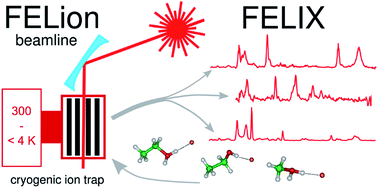
Faraday Discuss., 2019,217, 172-202
https://doi.org/10.1039/C8FD00225H
Introductory lecture: advances in ion spectroscopy: from astrophysics to biology
This introduction provides a historical context for the development of ion spectroscopy over the past half century by following the evolution of experimental methods to the present state-of-the-art.
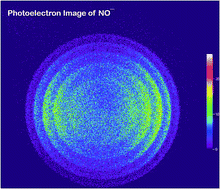
Faraday Discuss., 2019,217, 8-33
https://doi.org/10.1039/C9FD00030E
Photoelectron-photofragment coincidence studies of I3− using an electrospray ionization source and a linear accelerator
New insights into the dissociative photodetachment and the charge-symmetric three-body photodissociation of I3− are provided by photoelectron-photofragment coincidence spectroscopy.
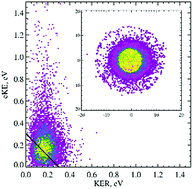
Faraday Discuss., 2019,217, 203-219
https://doi.org/10.1039/C8FD00216A
Probing solvation and reactivity in ionized polycyclic aromatic hydrocarbon–water clusters with photoionization mass spectrometry and electronic structure calculations
Synchrotron based mass spectrometry coupled with theoretical calculations provides insight into polycyclic aromatic hydrocarbon water interactions.
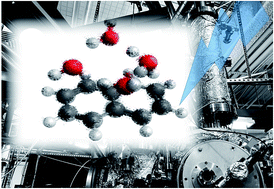
Faraday Discuss., 2019,217, 414-433
https://doi.org/10.1039/C8FD00229K
Hydration motifs of ammonium bisulfate clusters of relevance to atmospheric new particle formation
We have analyzed the binding motifs of water bound to a prototypical cluster containing three ammonium cations and two bisulfate anions using mass-selective vibrational spectroscopy and quantum chemical calculations.
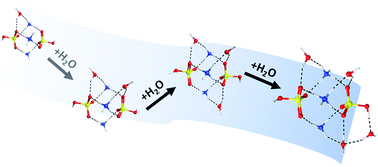
Faraday Discuss., 2019,217, 47-66
https://doi.org/10.1039/C8FD00206A
Towards state selective recombination of H3+ under astrophysically relevant conditions
We present studies on the thermalisation of H3+ ions in a cold He/Ar/H2 plasma at temperatures 30–70 K.
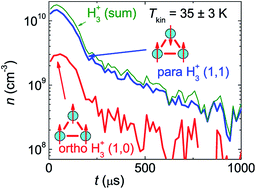
Faraday Discuss., 2019,217, 220-234
https://doi.org/10.1039/C8FD00214B
Photodetachment and photoreactions of substituted naphthalene anions in a tandem ion mobility spectrometer
Tandem IMS-laser-IMS is used to probe the intrinsic electronic absorptions of deprotonated substituted naphthalene anions.
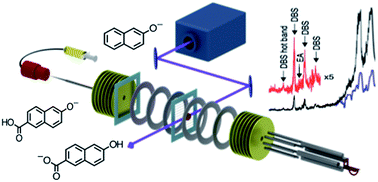
Faraday Discuss., 2019,217, 34-46
https://doi.org/10.1039/C8FD00217G
Conformational assignment of gas phase peptides and their H-bonded complexes using far-IR/THz: IR-UV ion dip experiment, DFT-MD spectroscopy, and graph theory for mode assignment
Graph theory based vibrational modes as new entities for vibrational THz spectroscopy.

Faraday Discuss., 2019,217, 67-97
https://doi.org/10.1039/C8FD00211H
Interactions of aggregating peptides probed by IR-UV action spectroscopy
The interplay between intramolecular and formed inter-sheet hydrogen bonds and the effect of dispersion interactions on the formation of peptide dimers is studied using IR-UV action spectroscopy.
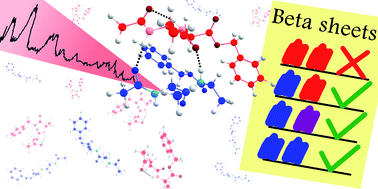
Faraday Discuss., 2019,217, 322-341
https://doi.org/10.1039/C8FD00208H
Effect of alkali ions on optical properties of flavins: vibronic spectra of cryogenic M+lumiflavin complexes (M = Li–Cs)
Cryogenic ion spectroscopy of metal–lumiflavin (M+LF) complexes at the level of vibrational resolution illustrates the large impact of alkali ions on the optical properties of this prototypical flavin molecule.
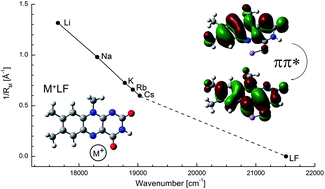
Faraday Discuss., 2019,217, 256-275
https://doi.org/10.1039/C8FD00203G
Combining ultra-high resolution ion mobility spectrometry with cryogenic IR spectroscopy for the study of biomolecular ions
We explore the capability of SLIM-based IMS for isomer selectivity in combination with cryogenic, messenger-tagging IR spectroscopy.
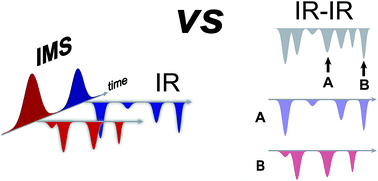
Faraday Discuss., 2019,217, 114-125
https://doi.org/10.1039/C8FD00180D
Spectroscopy of temporary anion states: Renner–Teller coupling and electronic autodetachment in copper difluoride anion
Internal level structures of temporary anion states (resonances) are probed using action spectroscopy obtained from photoelectron imaging of CuF2−.
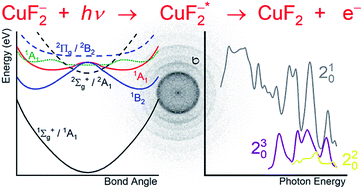
Faraday Discuss., 2019,217, 533-546
https://doi.org/10.1039/C8FD00224J
Spectroscopy of corannulene cations in helium nanodroplets
We have measured the electronic spectra of corannulene cations decorated with He.
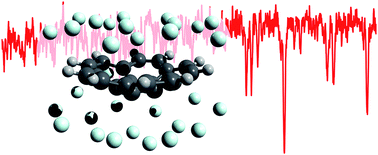
Faraday Discuss., 2019,217, 276-289
https://doi.org/10.1039/C8FD00178B
Electronic spectroscopy of isolated DNA polyanions
We address whether action spectroscopy could be used to investigate structural changes in gas-phase biomolecule (e.g. nucleic acid) ions, owing to changes in the environments of their chromophores, while taking advantage of the additional spectrometric separation of complex mixtures.
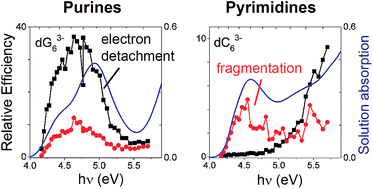
Faraday Discuss., 2019,217, 361-382
https://doi.org/10.1039/C8FD00207J
Selecting and identifying gas-phase protonation isomers of nicotineH+ using combined laser, ion mobility and mass spectrometry techniques
Protonation isomers of gas-phase nicotineH+ are separated and assigned using a combination of FAIMS and UV photodissociation action spectroscopy.
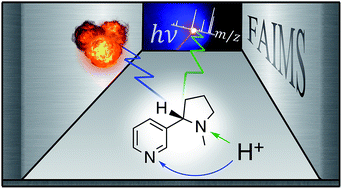
Faraday Discuss., 2019,217, 453-475
https://doi.org/10.1039/C8FD00212F
Ion reactions in atmospherically-relevant clusters: mechanisms, dynamics and spectroscopic signatures
Exploring models of reactions of N2O4 with ions in water in order to provide molecular-level understanding of these processes.
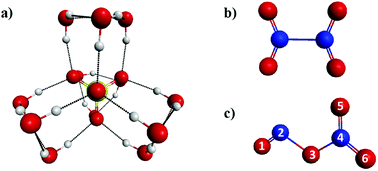
Faraday Discuss., 2019,217, 342-360
https://doi.org/10.1039/C8FD00230D
Electronic spectra of ions of astrochemical interest: from fast overview spectra to high resolution
Combining He-tagging in a cryotrap with a supercontinuum laser is an efficient way of identifying candidates for DIBs carriers.
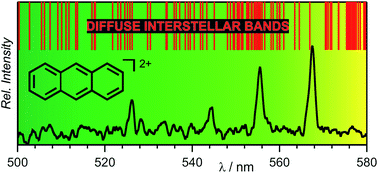
Faraday Discuss., 2019,217, 98-113
https://doi.org/10.1039/C8FD00196K
State-selective coherent motional excitation as a new approach for the manipulation, spectroscopy and state-to-state chemistry of single molecular ions
We present theoretical and experimental progress towards a new approach for the precision spectroscopy, coherent manipulation and state-to-state chemistry of single isolated molecular ions in the gas phase.

Faraday Discuss., 2019,217, 561-583
https://doi.org/10.1039/C8FD00195B
Investigation of the position of the radical in z3-ions resulting from electron transfer dissociation using infrared ion spectroscopy
The molecular structures of six open-shell z3-ions resulting from electron transfer dissociation mass spectrometry (ETD MS) were investigated using infrared ion spectroscopy in combination with density functional theory and molecular mechanics/molecular dynamics calculations.
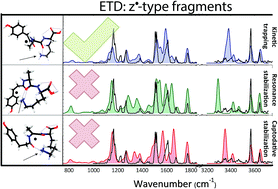
Faraday Discuss., 2019,217, 434-452
https://doi.org/10.1039/C8FD00202A
Electronic spectroscopy and nanocalorimetry of hydrated magnesium ions [Mg(H2O)n]+, n = 20–70: spontaneous formation of a hydrated electron?
The absorption spectra and photochemistry of [Mg(H2O)n]+, n = 20–70, resemble those of the hydrated electron (H2O)n−.
![Graphical abstract: Electronic spectroscopy and nanocalorimetry of hydrated magnesium ions [Mg(H2O)n]+, n = 20–70: spontaneous formation of a hydrated electron?](/en/Image/Get?imageInfo.ImageType=GA&imageInfo.ImageIdentifier.ManuscriptID=C8FD00204E&imageInfo.ImageIdentifier.Year=2019)
Faraday Discuss., 2019,217, 584-600
https://doi.org/10.1039/C8FD00204E
Probing the selectivity of Li+ and Na+ cations on noradrenaline at the molecular level
Noradrenaline favors an extended conformation when coordinating to Li+ when compared to Na+, which may explain the tranquilizing effect of Li+.
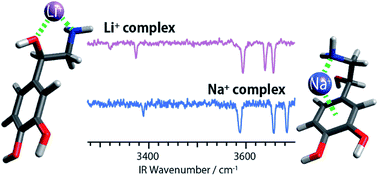
Faraday Discuss., 2019,217, 396-413
https://doi.org/10.1039/C8FD00186C
Model potential study of non-valence correlation-bound anions of (C60)n clusters: the role of electric field-induced charge transfer
Orbitals associated with the non-valence correlation-bound anions of the C60 dimer and linear trimer from calculations allowing charge transfer.
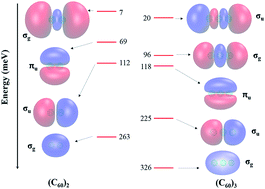
Faraday Discuss., 2019,217, 547-560
https://doi.org/10.1039/C8FD00199E
Photoelectron spectra of Al2O2− and Al3O3−via slow electron velocity-map imaging
High-resolution photoelectron spectroscopy of cryogenically-cooled aluminum oxide anions shows new subtleties in the vibronic structure of Al2O2−/0 and Al3O3−/0.

Faraday Discuss., 2019,217, 235-255
https://doi.org/10.1039/C8FD00165K
EOM-CC guide to Fock-space travel: the C2 edition
Electronic structure calculations for C2, C2−, and C22− using the CC/EOM-CC family of methods. Results illustrate that EOM-CCSD provides an attractive alternative to MR approaches.
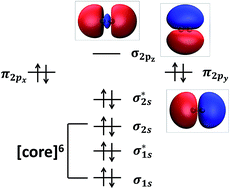
Faraday Discuss., 2019,217, 514-532
https://doi.org/10.1039/C8FD00185E
Electrospray ionization photoelectron spectroscopy of cryogenic [EDTA·M(II)]2− complexes (M = Ca, V–Zn): electronic structures and intrinsic redox properties
A systematic photoelectron spectroscopy and theoretical study of divalent transition metal EDTA complexes illustrating the intrinsic correlations of redox properties in the gas and solution phases.
![Graphical abstract: Electrospray ionization photoelectron spectroscopy of cryogenic [EDTA·M(ii)]2− complexes (M = Ca, V–Zn): electronic structures and intrinsic redox properties](/en/Image/Get?imageInfo.ImageType=GA&imageInfo.ImageIdentifier.ManuscriptID=C8FD00175H&imageInfo.ImageIdentifier.Year=2019)
Faraday Discuss., 2019,217, 383-395
https://doi.org/10.1039/C8FD00175H
Storage time dependent photodissociation action spectroscopy of polycyclic aromatic hydrocarbon cations in the cryogenic electrostatic storage ring DESIREE
The intrinsic absorption profile and radiative cooling rate of coronene cations are reported.
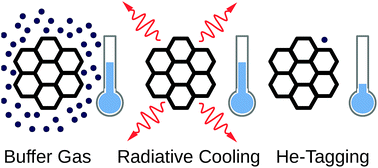
Faraday Discuss., 2019,217, 126-137
https://doi.org/10.1039/C8FD00161H
Going large(r): general discussion
Faraday Discuss., 2019,217, 476-513
https://doi.org/10.1039/C9FD90034A
Exotic systems: general discussion
Faraday Discuss., 2019,217, 601-622
https://doi.org/10.1039/C9FD90035G
Pushing resolution in frequency and time: general discussion
Faraday Discuss., 2019,217, 290-321
https://doi.org/10.1039/C9FD90033K
Controlling internal degrees: general discussion
Faraday Discuss., 2019,217, 138-171
https://doi.org/10.1039/C9FD90032B
About this collection
We are delighted to share with you a selection of the papers which will be presented at our Faraday Discussion on Advances in ion spectroscopy - from astrophysics to biology taking place in York, UK in April 2019. More information about the event may be found here: http://rsc.li/ionspectroscopy-fd2019. Additional articles will be added to the collection as they are published. The final versions of all the articles presented and a record of the live discussions will be published after the event.
Gaseous ion spectroscopy generally couples mass spectrometry with high-resolution laser spectroscopy to studying the intrinsic chemical and physical properties of isolated ions. The isolation of the molecular ion of interest from its native environment is important to decouple the influence of the surroundings from the intrinsic properties. The effect of the environment can then be incrementally re-introduced through studies of sequentially solvated clusters, which allow the interaction with solvent molecules with the ion to be studied on the molecular level. With the potential to impact a wide range of chemical, physical and biological problems, the field has experienced rapid diversification in the past decade with the application of different ion sources, cryogenic ion traps, and new light sources such that this potential impact is rapidly being realised. The rapid development of experimental techniques has required a concomitant development of theory, which is now being used to model ever larger systems both in terms of structure and dynamics. This Faraday Discussion will bring together experimentalists and theoreticians working on ion spectroscopy in a broad sense to discuss the latest innovations and applications mapping the current status and future challenges of this field.